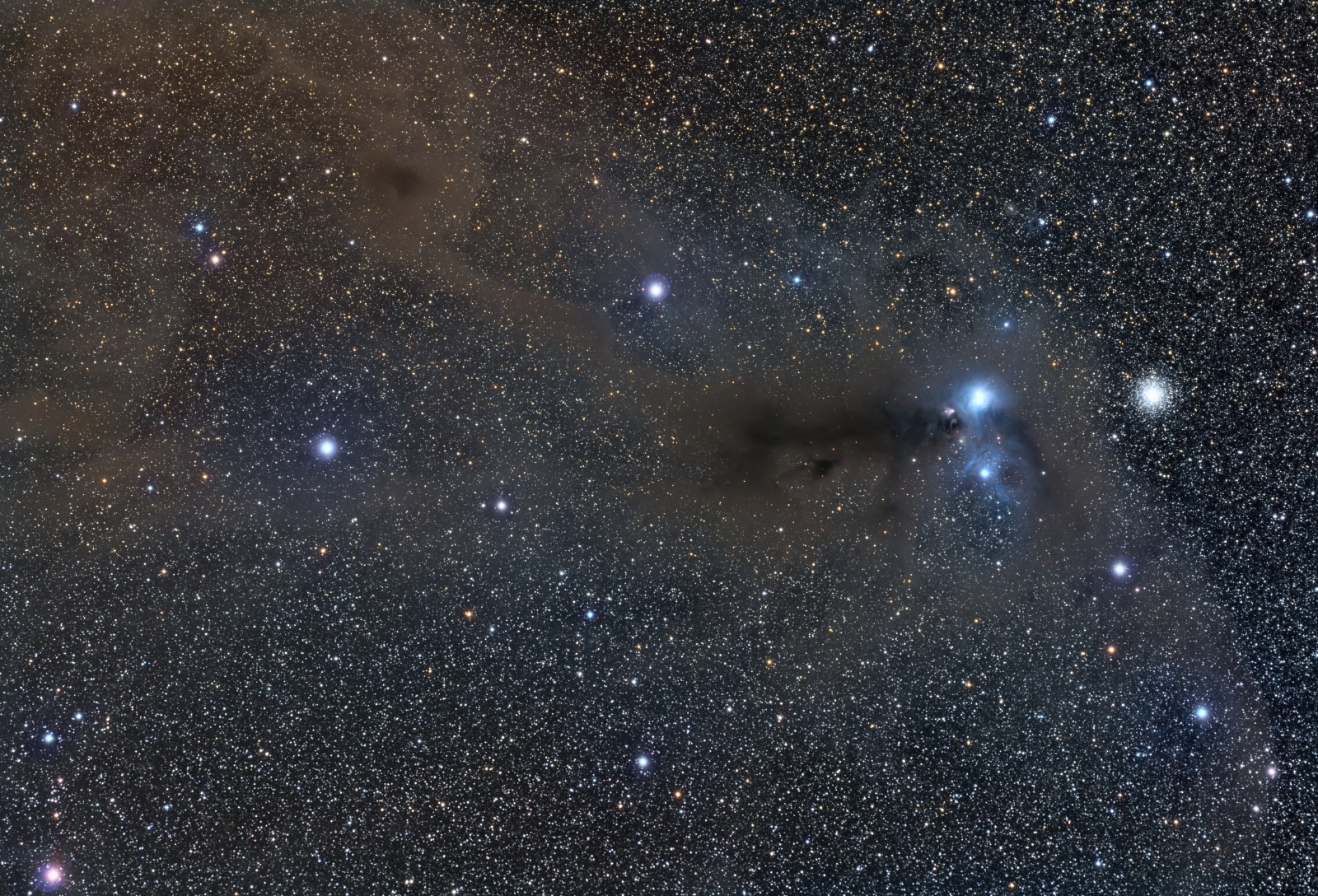Corona Australis
Click image for full size version
February 13, 2016 – Collaboration with Brett Soames
Corona Australis is a southern constellation that hugs the horizon from my location. It lies south of Sagittarius, and west of the “stinger” stars of the tail of Scorpius. The brown dusty area is the Corona Australis molecular cloud, and is one of the closest star forming regions to Earth. The globular cluster at right in this image is NGC 6723. To the left of the globular cluster are several bright blue reflection nebula, NGC 6729, NGC 6726–7, and IC 4812. Just left of these blue patches is a very small, pale comet-shaped patch. This is a variable nebula that brightens and dims with the young variable star R Corona Australis, which lies inside it. There’s a lot more going on in this image, which is well described here.
This image is a collaboration between me and Brett Soames, of Bathurst, New South Wales, Australia. Brett acquired the image data from his home observatory and did the pre-processing (calibration, alignment and integration). I did the processing as described below to produce this image.
Tekkies:
SBIG STL-11000M camera, Astrodon Gen2 LRGB filters, Takahashi FSQ106, Paramount ME, FLI Focuser and Pyxis rotator. Guided with STL-11000’s internal guider. All pre-processing and processing in PixInsight. Brett Soames acquired the data from his observatory in Bathurst, New South Wales, Australia.
8x10mR, 8x10mG, 9x10mB and 26x10mL unbinned (total = 8hr30m)
RGB:
Creation and cleanup: L, R, G and B masters were cropped. R, G and B were combined to make an RGB image which was processed with DBE and ColourCalibration. MultiscaleLinearTransformation was applied to reduce the noise.
Stretching: HistogramTransformation was applied to make a pleasing, but bright image.
Synthetic Luminance:
Cleanup: The cropped L,R,G and B masters were combined to produce a synthetic Luminance channel. DBE was applied to neutralize the background. MultiscaleLinearTransformation was applied to reduce the noise.
Stretching: HistogramTransformation was applied using the autostretch settings.
Combining Luminance with RGB:
The luminance channel of the RGB was extracted, processed and then added back into the RGB image as follows:
1. Extract luminance from the RGB image.
2. Apply LinearFit using the SynthL channel as a reference.
3. Use ChannelCombination in Lab mode to replace the RGB’s luminance with the fitted luminance from step 2.
4. LRGBCombine was then used to add L to make a LRGB image.
Final Processing
The ColorMask script was used to make a magenta mask, which was blurred with Convolution and then used to target a reduction in magenta saturation and a slight hue shift towards blue in the haloes around the brightest stars. Colour saturation was increased in the medium sized and smallest stars and in the dark nebula using Curves. Then Curves was used without a mask to increase contrast and boost saturation throughout. The DarkStructureEnhance script was applied at a setting of 0.25 to slightly darken the darkest portions of the brown dusty regions.
Image scale for this telescope-camera combination is 3.5 arcsec per pixel.







Leave A Comment